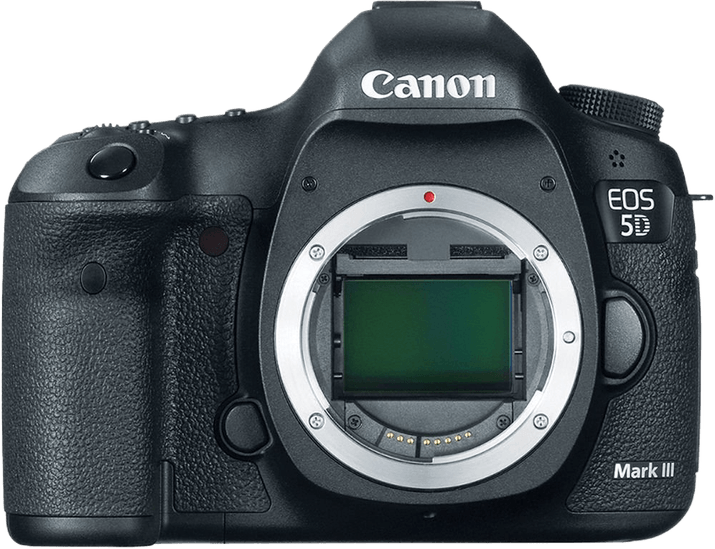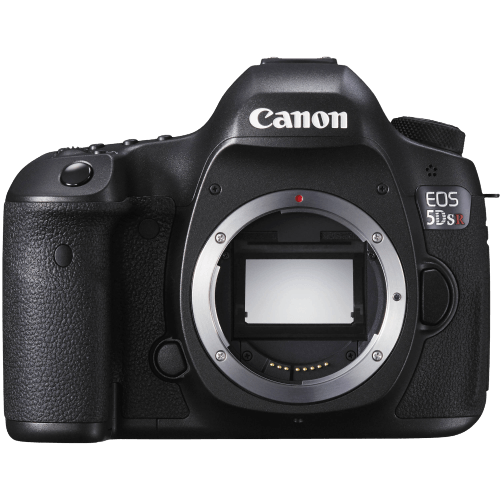Canon EOS 5D Mark III vs EOS 5DS R Comparison
Canon EOS 5D Mark III

Canon EOS 5DS R

The Canon EOS 5DS R emerges as the winner with a score of 68/100, while the Canon EOS 5D Mark III follows closely at 65/100. Both cameras are DSLRs and share the same dimensions of 152 x 116 x 76mm. They were released in 2012 and 2015, with launch prices of $3499 and $3900, respectively.
The 5DS R outperforms the 5D Mark III with its lighter weight of 930g, compared to the latter’s 950g. This makes it more convenient to carry around during shoots. However, the 5D Mark III has the advantage of being more affordable, with a launch price that is $401 lower than the 5DS R.
Considering these specifications, the Canon EOS 5DS R is a better camera due to its higher score and lighter weight, while the Canon EOS 5D Mark III is still a viable option for those seeking a more budget-friendly choice.
Canon EOS 5D Mark III vs EOS 5DS R Overview and Optics
The Canon EOS 5DS R emerges as the winner in optics with a score of 73/100, compared to the Canon EOS 5D Mark III’s score of 67/100. Both cameras share several specifications, such as the CMOS sensor type, full-frame sensor size, Canon EF lens mount, and lack of image stabilization. However, there are key differences that make one camera stand out over the other.
The 5DS R’s superior optics score is due to its higher megapixel count of 50.6, which results in greater image detail and larger print sizes. Additionally, the 5DS R has a higher DXOMARK score for the sensor (86) compared to the 5D Mark III’s score of 81, indicating better overall image quality. The 5DS R’s dual Digic 6 processor also contributes to its better performance in processing the high-resolution images.
On the other hand, the 5D Mark III has a faster shooting speed of 6 frames per second, making it more suitable for capturing fast-moving subjects. This advantage may be significant for photographers who prioritize action and sports photography. However, the difference in shooting speed is only a single frame per second, which may not be a substantial enough benefit for some users.
Taking these factors into account, the Canon EOS 5DS R is the better choice for photographers who value high-resolution images, better overall image quality, and advanced image processing capabilities. The Canon EOS 5D Mark III, while slightly faster in shooting speed, does not offer enough advantages to outweigh its lower optics score and fewer megapixels.
Canon EOS 5D Mark III vs EOS 5DS R Video Performance
The Canon EOS 5DS R narrowly wins in video capabilities with a score of 57/100, compared to the Canon EOS 5D Mark III, which has a score of 56/100. Both cameras share common features, such as Full HD video resolution and maximum video dimensions of 1920 x 1080.
The 5DS R outperforms the 5D Mark III in terms of time-lapse functionality. This feature is built into the 5DS R, allowing users to create stunning time-lapse videos without needing additional equipment or software. This advantage makes the 5DS R more versatile and convenient for capturing dynamic scenes and events.
On the other hand, the 5D Mark III has a higher maximum video frame rate of 60fps, compared to the 30fps of the 5DS R. This means that the 5D Mark III can capture smoother and more fluid motion, especially in fast-paced scenes or when recording sports events. This higher frame rate gives the 5D Mark III an edge in certain situations where capturing quick movement is crucial.
Taking these factors into account, the Canon EOS 5DS R is a better choice for those who prioritize time-lapse functionality and appreciate its convenience. However, the Canon EOS 5D Mark III is more suitable for users who require a higher frame rate for smoother video capture of fast-moving subjects. Ultimately, the choice between these two cameras should be based on the specific video requirements of the photographer.
Canon EOS 5D Mark III vs EOS 5DS R Features and Benefits
The Canon EOS 5D Mark III and the Canon EOS 5DS R both have a feature score of 59/100. This means that the cameras have the same overall feature set, and neither camera is better than the other in terms of features.
Both cameras have a 3.2-inch screen with a resolution of 1,040,000 dots. Neither camera has a touchscreen, flip screen, GPS, WIFI, or Bluetooth. These common specifications show that the two cameras are very similar in terms of features.
Since the cameras have the same feature score, there isn’t a clear winner in terms of better features. However, it is important to consider other aspects of the cameras, such as their general specifications, optics, and video capabilities, to determine which camera is more suitable for specific needs and preferences.
The Canon EOS 5D Mark III and the Canon EOS 5DS R may have some differences in other areas, such as image quality, autofocus, or build quality, which might make one camera more appealing to certain users. It is essential to research and compare these additional factors to make an informed decision when choosing between these two cameras.
Despite having the same feature score, the Canon EOS 5D Mark III and the Canon EOS 5DS R may cater to different users based on other aspects of their performance and capabilities. Therefore, it is crucial to consider each camera as a whole and evaluate them based on individual needs and preferences before making a decision.
Canon EOS 5D Mark III vs EOS 5DS R Storage and Battery
The Canon EOS 5D Mark III outperforms the Canon EOS 5DS R in storage and battery with a score of 76/100 compared to 65/100. Both cameras have two memory card slots and accept SD/SDHC/SDXC and Compact Flash memory cards. They also use the same battery type, LP-E6, and neither supports USB charging.
The 5D Mark III has a longer battery life, providing 950 shots compared to the 5DS R’s 700 shots. This makes the 5D Mark III more suitable for extended photography sessions or situations where charging may not be readily available.
In contrast, the 5DS R offers UHS-I compatibility for SD/SDHC/SDXC memory cards, allowing for faster read and write speeds. This feature is beneficial for photographers who require quick data transfers or continuous shooting.
Taking these factors into consideration, the Canon EOS 5D Mark III is the superior choice for those prioritizing battery life, while the Canon EOS 5DS R is a better option for those seeking faster memory card performance.
Canon EOS 5D Mark III vs EOS 5DS R – Our Verdict
Are you still undecided about which camera is right for you? Have a look at these popular comparisons that feature the Canon EOS 5D Mark III or the Canon EOS 5DS R:

